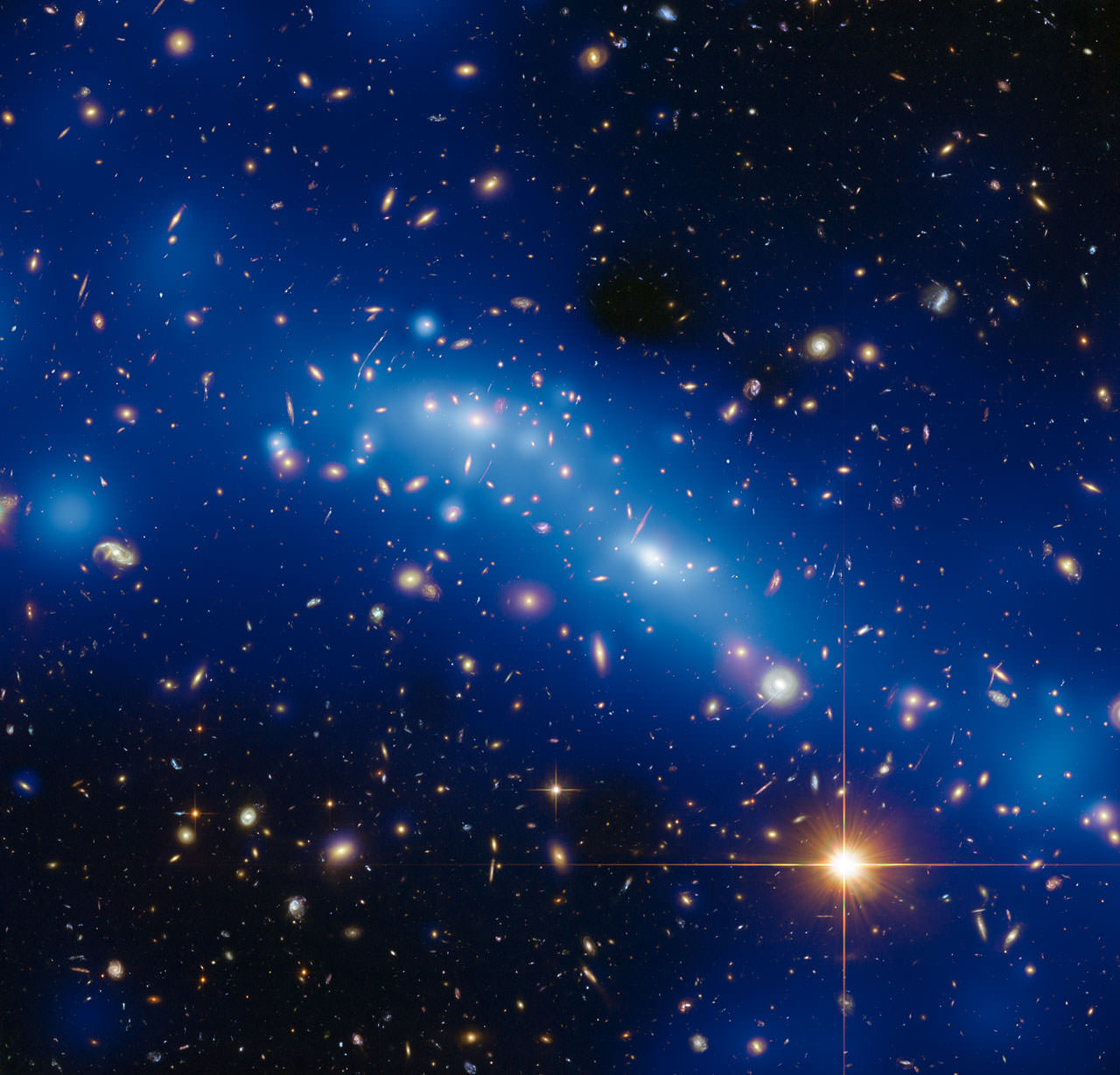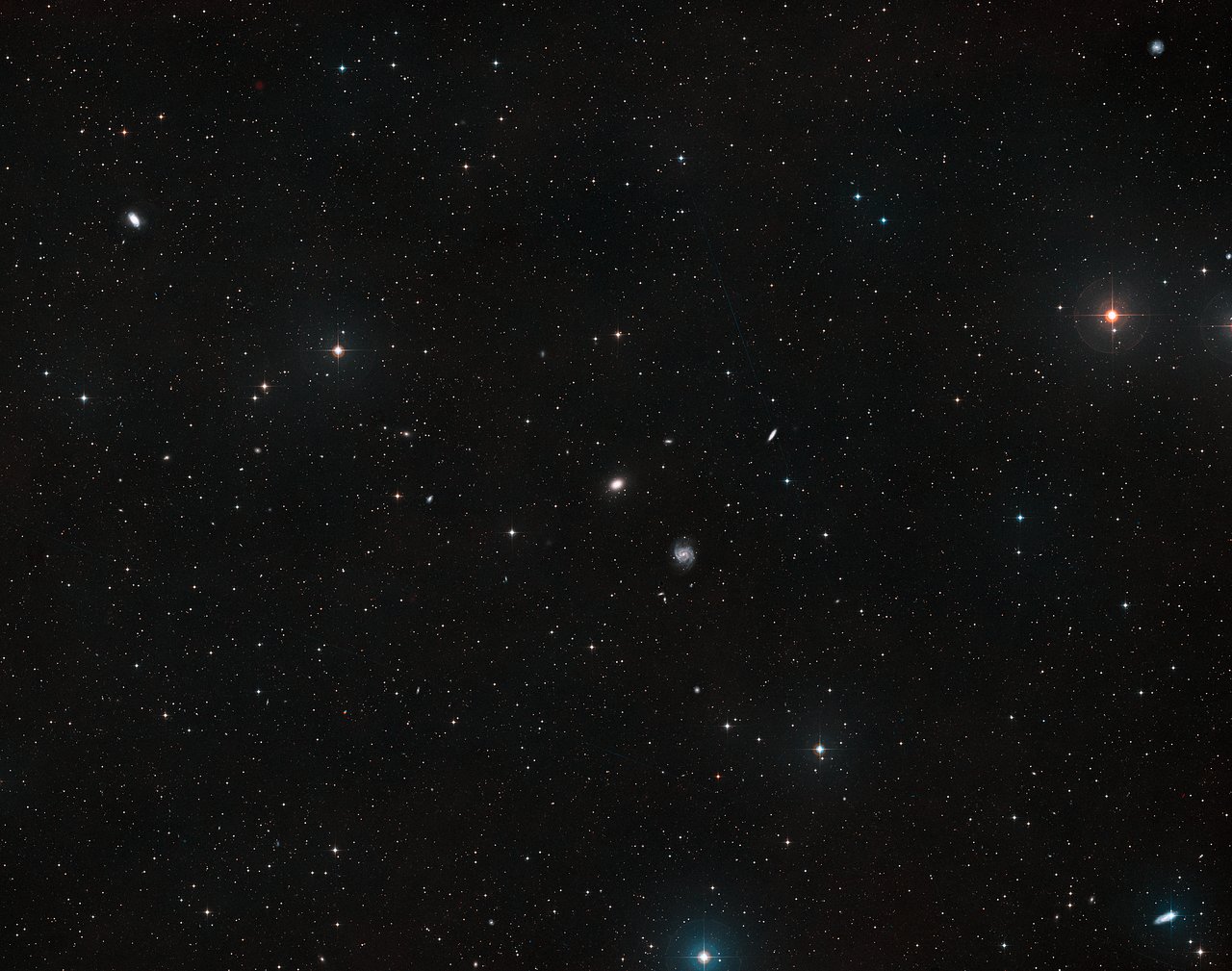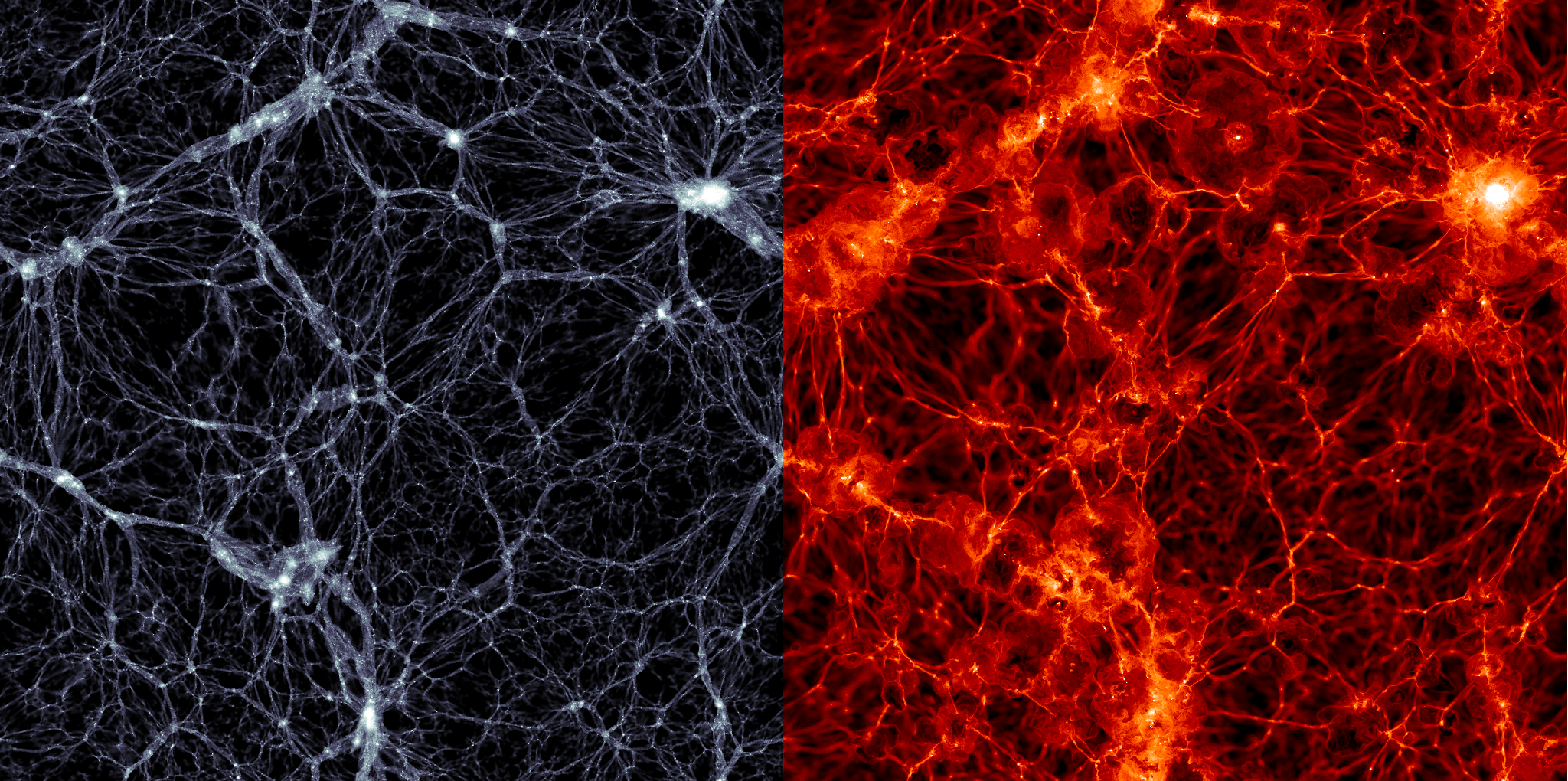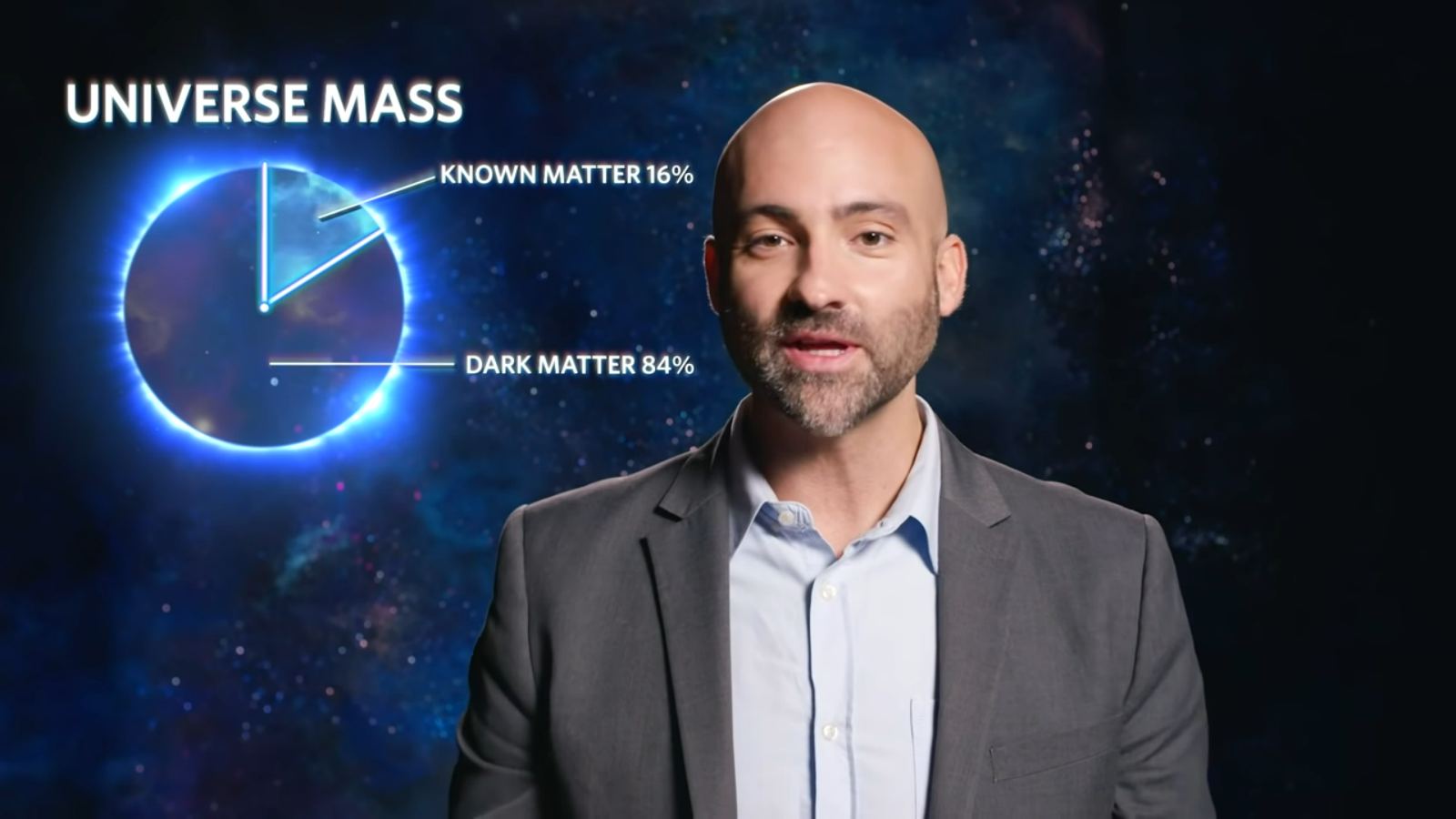Dark matter has long been a mystery to astronomers, in no small part because it is so hard to measure directly. Its influence is plain when looking at its gravitational effects on objects such as far away galaxies, but measuring that influence directly has proved much trickier. But now, a team of scientists thinks they have a way to measure the influence of dark matter directly – all it would require is a specialized probe that sits really far away from Earth for a while.
Continue reading “How Dark Matter Could Be Measured in the Solar System”Finally, an Explanation for the Cold Spot in the Cosmic Microwave Background

According to our current Cosmological models, the Universe began with a Big Bang roughly 13.8 billion years ago. During the earliest periods, the Universe was permeated by an opaque cloud of hot plasma, preventing atoms from forming. About 380,000 years later, the Universe began to cool and much of the energy generated by the Big Bang converted into light. This afterglow is now visible to astronomers as the Cosmic Microwave Background (CMB), first observed during the 1960s.
One peculiar characteristic about the CMB that attracted a lot of attention was the tiny fluctuations in temperature, which could provide information about the early Universe. In particular, there is a rather large spot in the CMB that is cooler than the surrounding afterglow, known as the CMB Cold Spot. After decades of studying the CMB’s temperature fluctuations, a team of scientists recently confirmed the existence of the largest cold spots in the CMB afterglow – the Eridanus Supervoid – might be the explanation for the CMB Cold Spot that astronomers have been looking for!
Continue reading “Finally, an Explanation for the Cold Spot in the Cosmic Microwave Background”Missing Mass? Not on our Watch—Dr. Paul Sutter Explains Dark Matter
Do you have a few minutes to spare and a thirst for knowledge about one of the greater mysteries of the Universe? Then head on over to ArsTechnica and check out the new series they’re releasing titled Edge of Knowledge, starring none other than Dr. Paul Sutter. In what promises to be an enlightening journey, Dr. Sutter will guide viewers through an eight-episode miniseries that explores the mysteries of the cosmos, such as black holes, the future of climate change, the origins of life, and (for their premiere episode) Dark Matter!
As far as astrophysicists and cosmologists are concerned, Dark Matter is one of the most enduring, frustrating, and confusing mysteries ever! Then, one must wonder why scientists are working so tirelessly to track it down? The short answer is: the most widely accepted theories of the Universe don’t make sense without out. The long answer is… it’s both complicated and long! Luckily, Dr. Sutter manages to sum it all up in less than 15 minutes. As an accomplished physicist, he also explains why it is so important that we track Dark Matter down!
Continue reading “Missing Mass? Not on our Watch—Dr. Paul Sutter Explains Dark Matter”Astronomy Jargon 101: Dark Matter

In this series we are exploring the weird and wonderful world of astronomy jargon! You’ll feel mysterious about today’s topic: dark matter!
Continue reading “Astronomy Jargon 101: Dark Matter”Galaxies Have Been Found With no Dark Matter at all

One of the greatest cosmological mysteries facing astrophysicists today is Dark Matter. Since the 1960s, scientists have postulated that this invisible mass accounts for most of the matter in the Universe. While there are still many unresolved questions about it – i.e., What is it composed of? How do we detect it? What evidence is there beyond indirect detection? – we have managed to learn a few things about it over time.
For example, astrophysicists have observed that Dark Matter played a vital role in the formation of galaxies and is responsible for keeping them gravitationally bound. However, when an international team of astronomers observed the ultra-diffuse galaxy AGC 114905, they found no evidence of Dark Matter at all. If these observations are accurate, this discovery could force scientists to reevaluate their cosmological models and the way we look at the Universe.
Continue reading “Galaxies Have Been Found With no Dark Matter at all”A new Simulation of the Universe Contains 60 Trillion Particles, the Most Ever

Today, the greatest mysteries facing astronomers and cosmologists are the roles gravitational attraction and cosmic expansion play in the evolution of the Universe. To resolve these mysteries, astronomers and cosmologists are taking a two-pronged approach. These consist of directly observing the cosmos to observe these forces at work while attempting to find theoretical resolutions for observed behaviors – such as Dark Matter and Dark Energy.
In between these two approaches, scientists model cosmic evolution with computer simulations to see if observations align with theoretical predictions. The latest of which is AbacusSummit, a simulation suite created by the Flatiron Institute’s Center for Computational Astrophysics (CCA) and the Harvard-Smithsonian Center for Astrophysics (CfA). Capable of processing nearly 60 trillion particles, this suite is the largest cosmological simulation ever produced.
Continue reading “A new Simulation of the Universe Contains 60 Trillion Particles, the Most Ever”Experiment Finds no Sign of Sterile Neutrinos
We don’t know what dark matter is. We do know the characteristics of dark matter, and much of how it behaves, so we know what physical properties dark matter must have, but no known matter has all the necessary characteristics of dark matter. So we’re stumped.
Continue reading “Experiment Finds no Sign of Sterile Neutrinos”One Star Could Answer Many Unsolved Questions About Black Holes

A supermassive black hole (SMBH) likely resides at the center of the Milky Way, and in the centers of other galaxies like it. It’s never been seen though. It was discovered by watching a cluster of stars near the galactic center, called S stars.
S stars’ motions indicated the presence of a massive object in the Milky Way’s center and the scientific community mostly agreed that it must be an SMBH. It’s named Sagittarius A*.
But some scientists wonder if it really is a black hole. And one of the S stars could answer that question and a few others about black holes.
Continue reading “One Star Could Answer Many Unsolved Questions About Black Holes”A Particle Physics Experiment Might Have Directly Observed Dark Energy

About 25 years ago, astrophysicists noticed something very interesting about the Universe. The fact that it was in a state of expansion had been known since the 1920s, thanks to the observation of Edwin Hubble. But thanks to the observations astronomers were making with the space observatory that bore his name (the Hubble Space Telescope), they began to notice how the rate of cosmic expansion was getting faster!
This has led to the theory that the Universe is filled with an invisible and mysterious force, known as Dark Energy (DE). Decades after it was proposed, scientists are still trying to pin down this elusive force that makes up about 70% of the energy budget of the Universe. According to a recent study by an international team of researchers, the XENON1T experiment may have already detected this elusive force, opening new possibilities for future DE research.
Continue reading “A Particle Physics Experiment Might Have Directly Observed Dark Energy”Cosmic Dawn Holds the Answers to Many of Astronomy’s Greatest Questions

Thanks to the most advanced telescopes, astronomers today can see what objects looked like 13 billion years ago, roughly 800 million years after the Big Bang. Unfortunately, they are still unable to pierce the veil of the cosmic Dark Ages, a period that lasted from 370,000 to 1 billion years after the Big Bang, where the Universe was shrowded with light-obscuring neutral hydrogen. Because of this, our telescopes cannot see when the first stars and galaxies formed – ca., 100 to 500 million years after the Big Bang.
This period is known as the Cosmic Dawn and represents the “final frontier” of cosmological surveys to astronomers. This November, NASA’s next-generation James Webb Space Telescope (JWST) will finally launch to space. Thanks to its sensitivity and advanced infrared optics, Webb will be the first observatory capable of witnessing the birth of galaxies. According to a new study from the Université de Genève, Switzerland, the ability to see the Cosmic Dawn will provide answers to today’s greatest cosmological mysteries.
Continue reading “Cosmic Dawn Holds the Answers to Many of Astronomy’s Greatest Questions”


